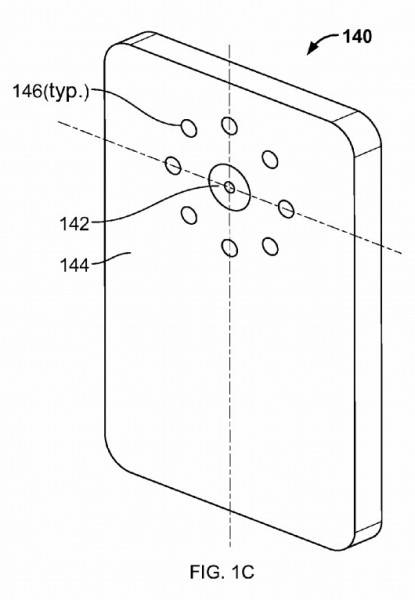
Many will understand how these patent filings go. Sometimes we see neat things and often we see things that never see the light of day. While we cannot say whether or not Google will ever put this latest patent filing to use in the real-world, it may be one to watch. Especially for those who enjoy taking pictures on their smartphone and have been dreaming of a better flash setup.
Specifically, the patent filing is for a “mobile communication device with multiple flashpoints.” You can begin to get an idea from the sketches included in this post. All of these are showing based off the camera lens being centered (from left to right) on the back of a smartphone. The simplest (seen above) shows a ring of fixed flashes around the camera lens.

Some of the more exciting ones show a setup where the flashes can be moved. These are shown as being in a circular, as well as other patterns. The patent filing goes on to cover more than a few use case scenarios. For example, Google notes that the setup can include four quadrants with each having a “flash generating device” or another where the light for all the flashes is provided by one common source. Other details note how these flashes can all be triggered at the same time, or how they can be triggered individually based on the current lighting. Use in this manner could help to provide better lighting and maybe even help to eliminate some shadows.

Finally, Google has also taken HDR into consideration. In this case the camera could take a series of images with varying flashes and then stitch them together for one (possibly) better looking picture. Bottom line here, this may not be something that we see come with the next Google (or Motorola) branded smartphone, however it is something that could bring an interesting advance to smartphone photography.
[via Unwired View]










This is simply awesome. I hope we see it in an actual device soon.
It would be cool if every other LED would be Infrared LEDs for night shots with the bright LEDs. Like those CCTV Cameras.
The most interesting thing about this is the possibility to get actual depth data for the image. Combine this with the way the flashes are set up around the lens and fired separately and you could get the ability to alter the light source’s position after taking a picture, as well as the ability to set the focal depth afterwards.
Cant wait to see it in real smartphones! Maybe Motorola Nexus 5??